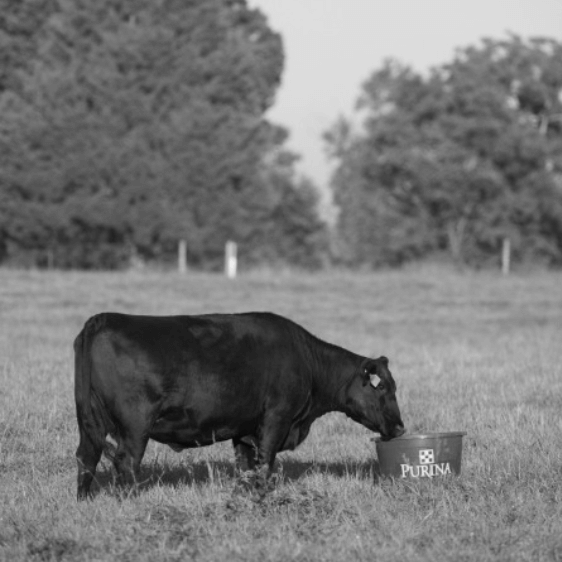Fly Control for Cattle: How to Beat the Buzz
Apr 06, 2020

Did you know that just a few adult flies can quickly populate to 4,000 flies or more per animal?
Pesky horn flies can become prolific in spring. However, early-season planning can help keep fly populations under control all season long.Here are four steps to help you beat the horn fly buzz:
1. Consider a feed-through fly control
One way to effectively combat horn flies is to use a feed-through fly control, that can be found in select cattle minerals. Cattle need both fly control and mineral, so delivering the two in one package can be a convenient option. Additionally, a feed-through form doesn’t require extra cattle handling or hassle beyond regular mineral feeder maintenance.
Once a cow consumes fly control mineral, it functions through the manure the cow excretes. Insect growth regulator (IGR) passes through the cow and into the manure where horn flies lay their eggs. IGR breaks the horn fly life cycle in the manure by preventing pupae from developing into biting adult flies. Watch to see how the process works.
A well-balanced cattle fly control mineral can help ensure consistent intake, and in turn, consistent fly control in manure piles.
2. Follow the 30/30 rule
Feed fly control mineral 30 days before the last frost in the spring and 30 days after the first frost in the fall. This rule of thumb ensures cows have access to fly control mineral before horn flies appear in early spring and provides coverage through summer and fall.
Feeding fly control mineral for 30 days after the first frost in fall is critical to help prevent horn flies from overwintering in the pupal stage, which can jump-start adult populations in the spring. If fly control mineral is not provided during this timeframe and temperatures bounce back after the first frost, you may be allowing additional fly generations to develop.
3. Manage your fly control mineral
Fly control mineral can only work if cattle are consuming it. Make sure you’re providing a quality mineral that is consumed at targeted intake levels. It is also critical that you monitor cattle mineral feeders on a regular basis. An empty feeder or feeders that are set and forgotten will not provide the same results as a well-managed mineral feeder.
Use one feeder for every 15 to 20 animals, and place the feeders near watering holes or loafing areas. Monitor consumption and adjust the number of feeders or feeder locations as necessary to encourage or reduce consumption. Cows should be consuming 4 ounces of mineral per day to get consistent fly control in manure piles.
4. Plan for the long haul
Watch for organophosphates and pyrethroids, which are active ingredients used in many horn fly control products. These ingredients are known to cause resistant flies. A feed-through ingredient, like (S)-methoprene, copies the horn fly’s own biochemical properties and has no known resistance issues. As a result, you can use fly control mineral as a long-term solution, versus having to switch products each year.
Fly control mineral can also provide benefits that last the full length of fly season compared to other cattle fly control product options that need reapplication. Ear tags, animal sprays and pour-ons require additional cattle handling and often multiple rounds of handling to cover the full fly season.
No matter which fly control method you use, make sure you have a plan in place well before flies emerge. Waiting until flies are present can impact cattle performance and productivity.
Aside from fly control, keep these cattle mineral supplement considerations in mind to help your cattle achieve greatness.
To try Purina® minerals today contact your Sunrise Feed Solutions Advisor.
Ted Perry, Beef Technical Solutions, Purina Mills